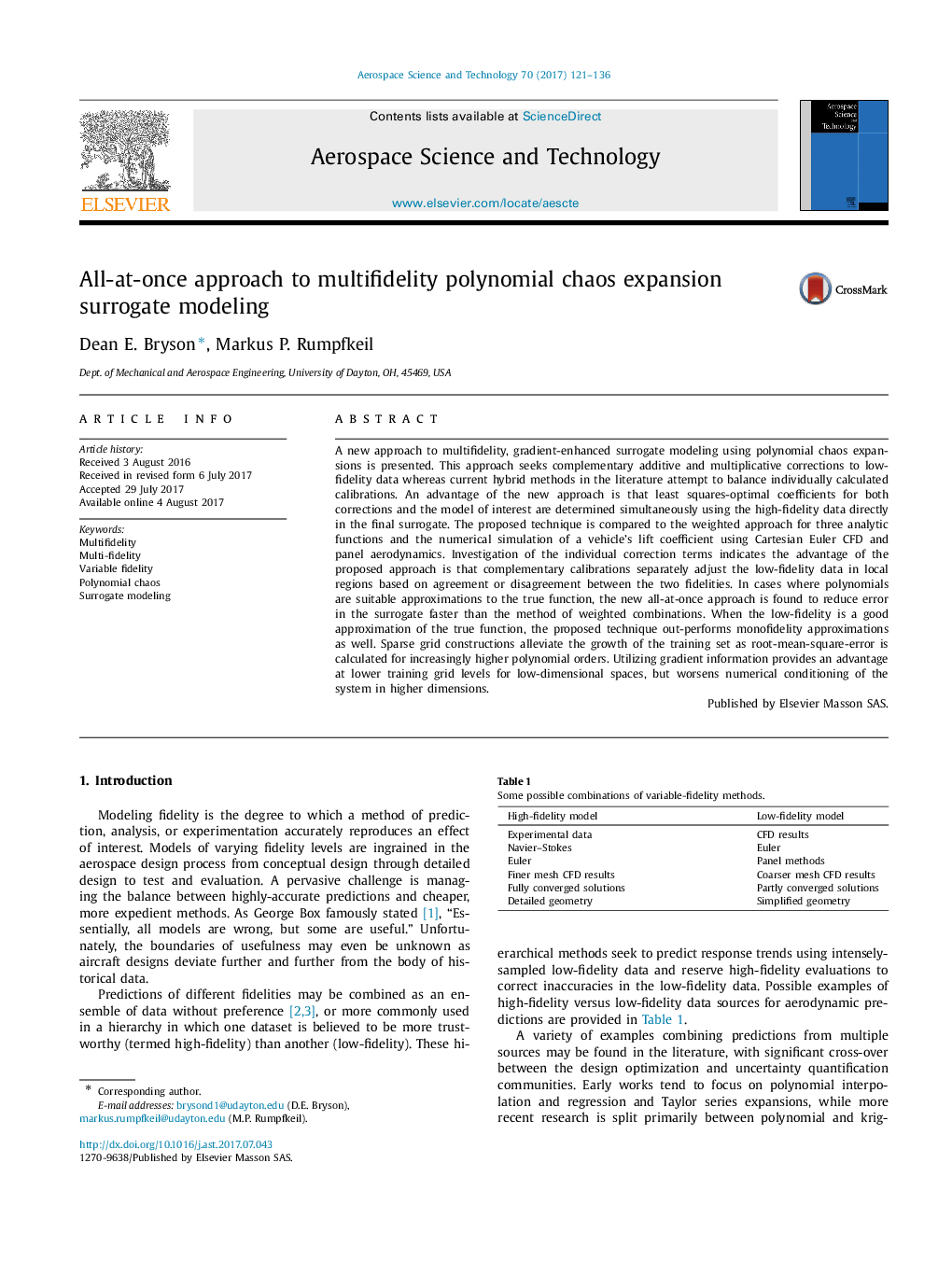| کد مقاله | کد نشریه | سال انتشار | مقاله انگلیسی | نسخه تمام متن |
|---|---|---|---|---|
| 5472594 | 1520064 | 2017 | 16 صفحه PDF | دانلود رایگان |
عنوان انگلیسی مقاله ISI
All-at-once approach to multifidelity polynomial chaos expansion surrogate modeling
ترجمه فارسی عنوان
رویکرد همه جانبه در برابر مدل سازی جایگزین گسترش چندجملهای
دانلود مقاله + سفارش ترجمه
دانلود مقاله ISI انگلیسی
رایگان برای ایرانیان
کلمات کلیدی
موضوعات مرتبط
مهندسی و علوم پایه
سایر رشته های مهندسی
مهندسی هوافضا
چکیده انگلیسی
A new approach to multifidelity, gradient-enhanced surrogate modeling using polynomial chaos expansions is presented. This approach seeks complementary additive and multiplicative corrections to low-fidelity data whereas current hybrid methods in the literature attempt to balance individually calculated calibrations. An advantage of the new approach is that least squares-optimal coefficients for both corrections and the model of interest are determined simultaneously using the high-fidelity data directly in the final surrogate. The proposed technique is compared to the weighted approach for three analytic functions and the numerical simulation of a vehicle's lift coefficient using Cartesian Euler CFD and panel aerodynamics. Investigation of the individual correction terms indicates the advantage of the proposed approach is that complementary calibrations separately adjust the low-fidelity data in local regions based on agreement or disagreement between the two fidelities. In cases where polynomials are suitable approximations to the true function, the new all-at-once approach is found to reduce error in the surrogate faster than the method of weighted combinations. When the low-fidelity is a good approximation of the true function, the proposed technique out-performs monofidelity approximations as well. Sparse grid constructions alleviate the growth of the training set as root-mean-square-error is calculated for increasingly higher polynomial orders. Utilizing gradient information provides an advantage at lower training grid levels for low-dimensional spaces, but worsens numerical conditioning of the system in higher dimensions.
ناشر
Database: Elsevier - ScienceDirect (ساینس دایرکت)
Journal: Aerospace Science and Technology - Volume 70, November 2017, Pages 121-136
Journal: Aerospace Science and Technology - Volume 70, November 2017, Pages 121-136
نویسندگان
Dean E. Bryson, Markus P. Rumpfkeil,
